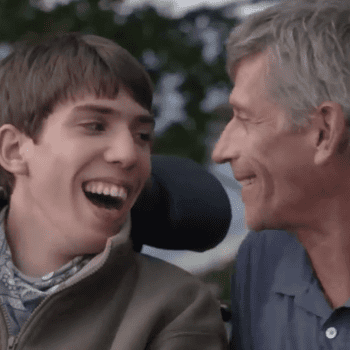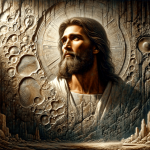
Like many of you, I will be otherwise occupied during the Oscars ceremony this weekend. In the past year, I have not kept up with film as closely as I used to and have missed all the names currently vying for Best Picture. However, from the admittedly small sample of movies I did see in 2018, one picture stood head and shoulders above the rest. So, for your consideration, I would like to present my best picture of 2018: The Rider.
The story is a blend of fact and fiction based on the true life of its star, Lakota cowboy and horse-trainer Brady Jandreau. Jandreau has no prior acting experience, but he offers a stunning turn in a film that allows him, quite literally, to be himself. When a rodeo bronco damages his skull and leaves him with brain damage (as it did in real life), he wrestles with his identity and his calling.
The genius behind the camera and the script is the young Chinese-American filmmaker Chloe Zhao, who has been obsessed with the American West since childhood. Now based there herself, she is forging her career by forging friendships with its people. The Rider is her second film. She met Jandreau and his community in South Dakota while making her first film, before the injury that would inspire her to write his story. His father and his autistic sister also play themselves, or versions of themselves, as do his cowboy friends.
These characters inhabit a world that feels out of time. Jandreau and his friends eke out their working-class existences while dreaming of the rodeo the way other boys dream of becoming sports stars. They swap stories around a campfire of all the times they should have died. The sight of teenagers and twenty-somethings comparing near-death shaves like war veterans has a peculiar and tragic beauty. In the story, one friend in particular has suffered a devastating fall that leaves him almost wholly debilitated and unable to speak. (In real life, this friend actually suffered his injuries in a car accident.) They murmur his name around the fire. “I guess we should say a prayer for Lane,” one says. They take off their cowboy hats and close their eyes. At the end, with the ease of old habit, they kiss their fingers and point to the sky.
Brady visits Lane in the hospital (also playing himself) and has conversations with him—Lane communicating by sign language. They sit together while Brady replays old home movies of the glory days on an iPhone. This among other jarring incongruities reminds the viewer that it is 2019. But when Jandreau takes flight across the plains on a beloved horse, defying doctor’s orders, time loses meaning. We feel as if we never left the world of John Ford and John Wayne, not really.
Despite his own injury, Brady has lost none of his touch with horses and unbroken colts. But his freedom to ride them, to become fully one with them, has been taken away. Compounding his troubles, he must shoulder the responsibilities neglected by his alcoholic gambler father after his mother’s death, including the care of his sister, Lilly. Unsavory characters and creditors drift in and out of their dingy house. The beloved horse is sold, and another is “purchased” with an IOU.
Happily, Jandreau’s real-life mother is alive, and he and his father have made their peace. However, Lilly’s disability is very real. In interviews, Zhao has explained that Lilly was cognizant of the project and even took a creative hand in her own scenes, though her trajectory wasn’t entirely predictable. Zhao delicately allows her moments to unfold organically, as father and brother improvise around her. In a rare moment of humor, her father tries to coax her into wearing a bra. She’s 15 years old, he reminds her. “But I just want a 14 years old!” she wails. He chuckles affectionately: “You can’t do a 14 no more, dear.” She later takes a scissors to the lot with steely resolve.
Lilly is frequently seen cradling an Elmo doll and often slips into dialogue and song from Sesame Street. In one of the film’s stunningly shot night scenes, she exclaims “Hey everybody, look at the moon! And the STARS! And the PLANETS!!” Then, small and hushed: “Wow.” She speaks for all of us.
Brady confides almost exclusively in Lilly, when he speaks at all. Yet despite his quiet demeanor and slim physical frame, nobody could describe him as effeminate. Unlike female directors who use men only as a means to the end of making their female characters look better, Zhao celebrates the masculine in all its vitality and flawed glory. In one scene, Brady bequeathes his chaps and spurs to a young friend, then insists on wrestling and pinning him a bit too long. But by far the film’s most luminous moments come when raw colts are brought in for Jandreau to train in real time. We watch entranced, overcome by the mystery of the way of a man with a horse.
The film has drawn comparisons to Darren Aronofsky’s The Wrestler. On the surface, the two main characters couldn’t appear more different—Jandreau short and slight and delicately featured, Mickey the wrestler a muscly bear of a man shooting himself up with steroids. Yet both are at war with their own failing bodies and their own manhood. Both must seek employment from the local grocery store when poor health and circumstance conspire to leave them with no other choice. Both ache with the humiliation of being benched, passed over by life, unable to do what they were born to do. But while Mickey’s story plays itself out to a bleak end, Zhao loves her characters too much to leave them without hope.
In another heartbreaking scene, a second horse injures himself and must be put down. Brady sits with Lilly and wrestles with what has happened, thinking about his own injury. He muses aloud about how an animal must be put down when it’s badly hurt. “But I’m a person,” he says. “So I got to live.” The double meaning of “got” is fortuitously profound if not intentional. “You know Lilly,” he continues, “I believe God gives each of us a purpose.” “Very true!” she chirps readily.
I could go on about all the things that make this film extraordinary. I could spend paragraphs just hymning the praises of cinematographer Joshua James Richards, who fills the picture with magic in every frame: in the close-up eye of a horse, in thick lowering magic-hour-tinted clouds, in a cowboy’s silhouette walking away against a sunset sky. I could name the several moments that made me weep harder in a film than I’ve wept in a very long time—though not just with sadness. And I could tell you how it all ends. But I won’t, because you need to see it for yourself. Rest assured: You are in good hands.













